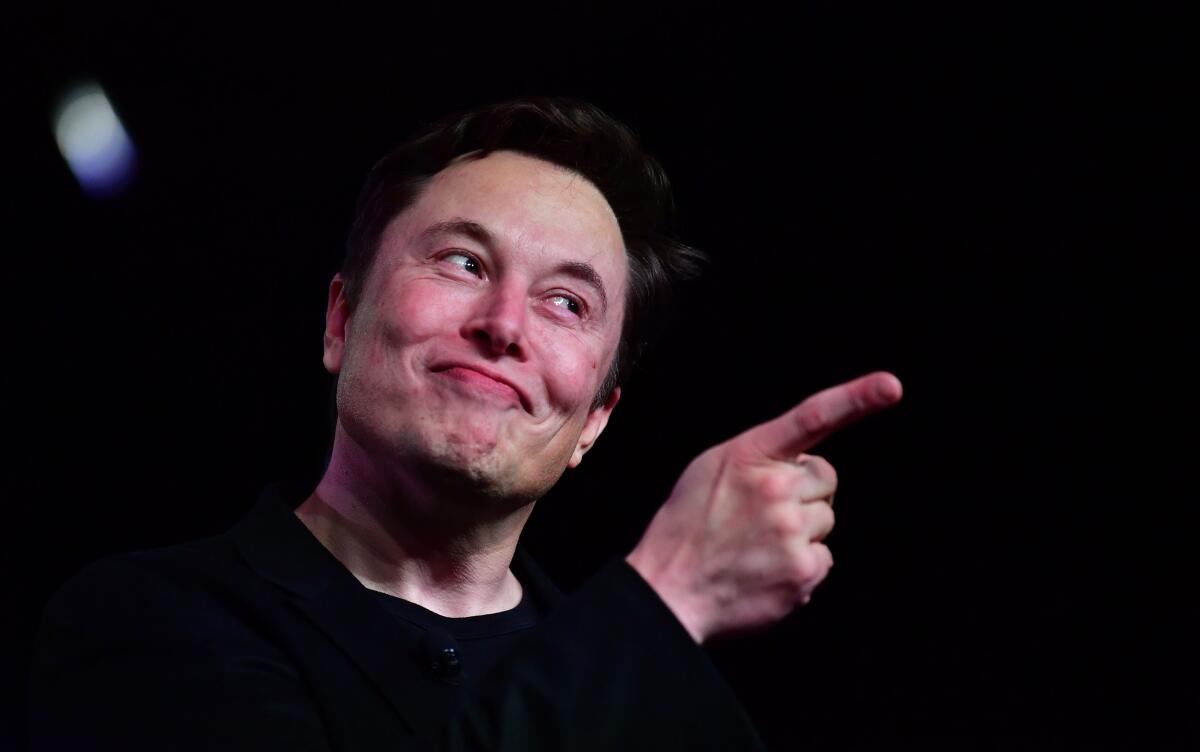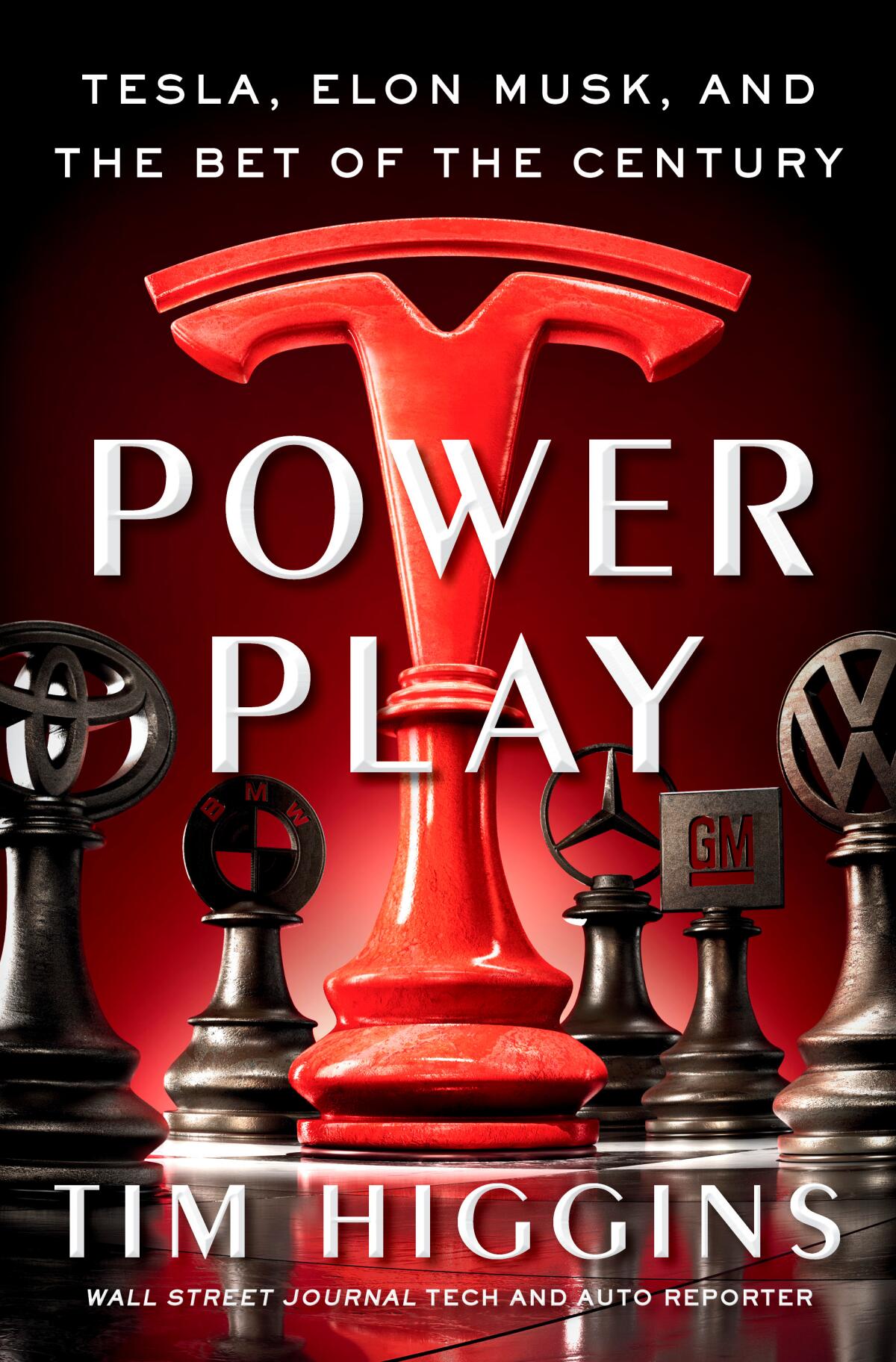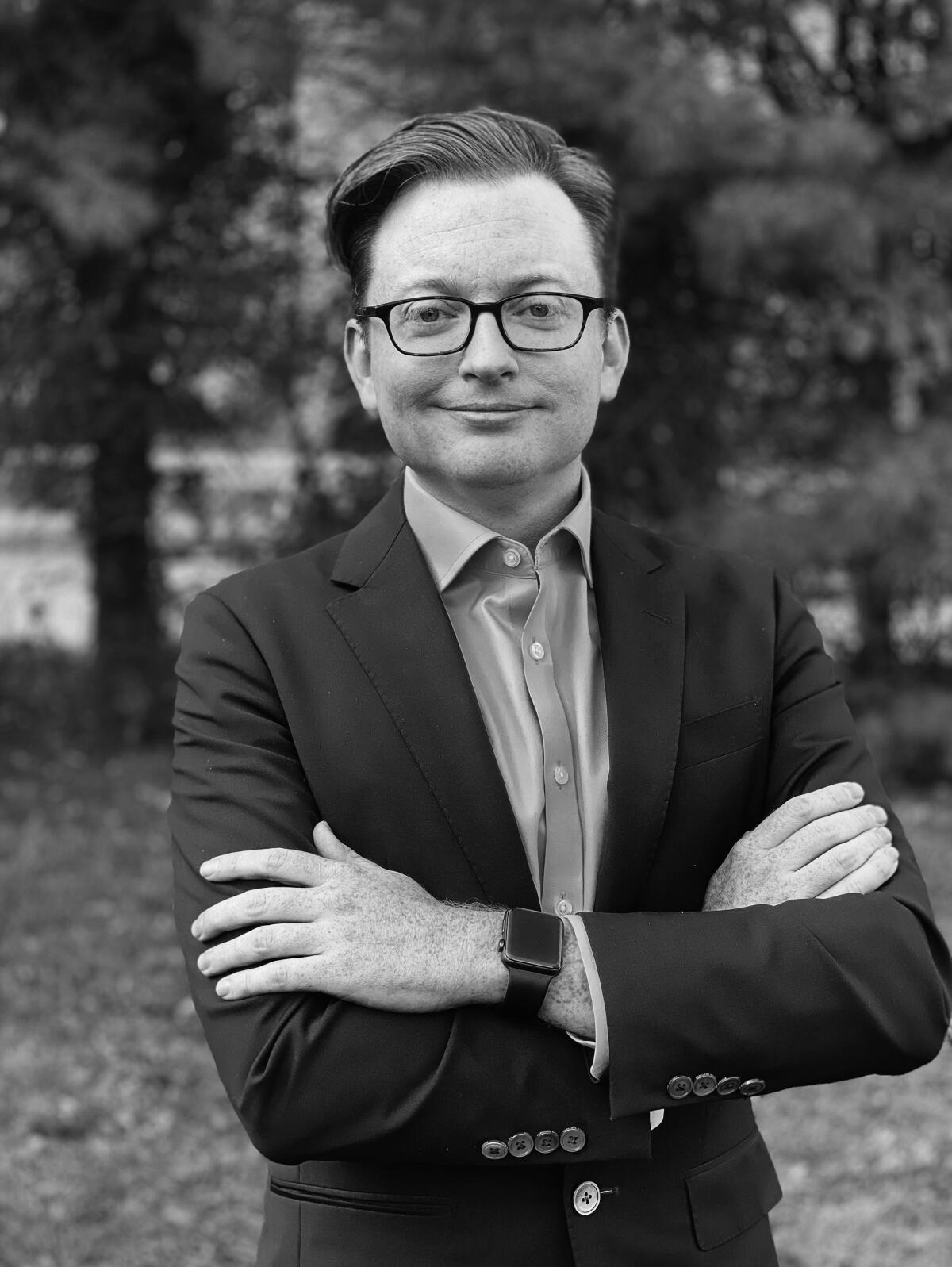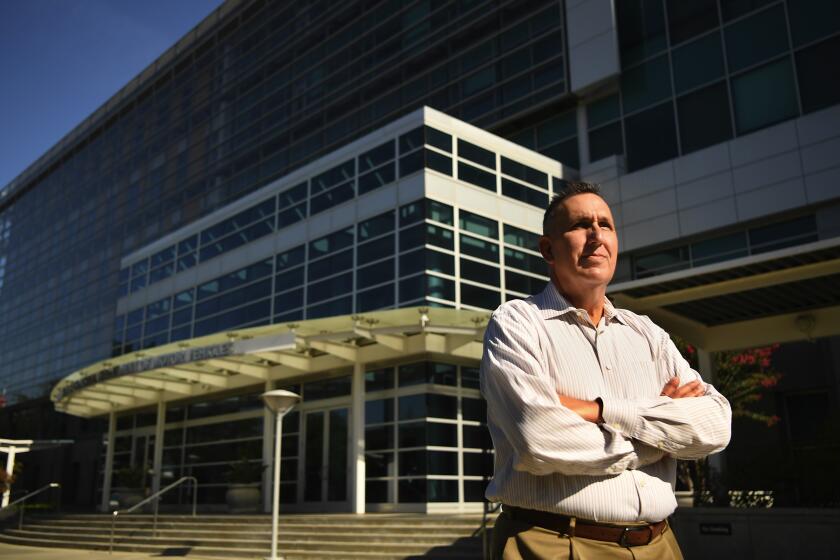Review: A deep new history of Tesla takes the shine off Elon Musk

On the Shelf
Power Play: Tesla, Elon Musk, and the Bet of the Century
By Tim Higgins
Doubleday: 400 pages, $30
If you buy books linked on our site, The Times may earn a commission from Bookshop.org, whose fees support independent bookstores.
Apple Chief Executive Tim Cook and Tesla Chief Executive Elon Musk are talking on the phone. The 2016 unveiling of the make-it-or-break-it Model 3 is coming soon, but Tesla is in serious financial trouble. Cook has an idea: Apple buys Tesla.
Musk is interested, but one condition: “I’m CEO.”
Sure, says Cook. When Apple bought Beats in 2014, it kept on the founders, Jimmy Iovine and Dr. Dre.
No, Musk says. Apple. Apple CEO.
“F— you” Cook says, and hangs up.
So goes the juiciest allegation in “Power Play: Tesla, Elon Musk and the Bet of the Century” by Wall Street Journal reporter Tim Higgins. The secondhand anecdote is atypical in a way — Higgins doesn’t break much news or gossip — but it also nicely encapsulates this sweeping history of the electric-car juggernaut, a company that often seems to innovate and thrive in spite of its founder rather than as a result of his vaunted genius.
To the inevitable disappointment of some and the relief of others, this is a book about Tesla, not about its founder. Elon Musk already does a fine job aiming the spotlight on himself. As Higgins details, it took a village to build Tesla. “Power Play” at its core is about the many employees not named Elon Musk who made essential contributions to whatever success the carmaker enjoys today.
Don’t fret: Musk is always part of the story, contributing his own brand of drama to keep things moving along. But in this book, the self-anointed “TechnoKing” (his actual job title at Tesla) serves not as main character but dramatic foil to those doing their best under chaotic, dysfunctional conditions.
One is J.B. Straubel, the Stanford engineer who teamed with Musk to take over the original Tesla, founded in 2003 by Martin Eberhard and Marc Tarpenning. Musk was the money man, Straubel the brains behind the battery technology. Straubel departed Tesla in 2019 after the board of directors agreed to a pay plan that has made Musk one of the richest people on the planet.
Another key player who gets his due here is Sterling Anderson, the self-driving-car pioneer who headed Tesla’s Autopilot project, only to quit after Musk rejected his push for driver-monitoring technology to keep people safe. Musk said he didn’t want to add technology that might nag Tesla customers. Anderson is now cofounder and chief product officer at Aurora Innovation, engineering true self-driving vehicles.
There is also Peter Rawlinson, who came to Tesla from Lotus as chief engineer for the Model S. He and Musk got along fine until Rawlinson started criticizing some of Musk’s ideas for the ill-fated Model X. Musk then found him “irritating.” Rawlinson quit and now runs Lucid Motors, a luxury EV maker soon to introduce vehicles that will compete directly with Tesla.
Dozens more are noted, most of them witnesses to or victims of the rage and wrath of Musk, a hair trigger of an executive who’s quick to fire people whether they deserve it or not.

On the floor of Tesla’s Fremont, Calif., factory, a line worker told Musk he’d invented a way to fix a car window’s screeching sound by making an incision on the door seal. Musk turned on manufacturing executive John Ensign in a rage: “This is unacceptable that you had a person working in your factory that knows the solution and you don’t even know that!” Ensign was fired. In fact, engineers had already tried that approach and the fix proved temporary. Ensign — now chief operating officer at Los Angeles electric bus maker Proterra — didn’t want to embarrass the worker by saying so in front of Musk.
Musk’s approach to many manufacturing issues was, and still appears to be, keeping the assembly line moving while line problems are being fixed. He’s not a fan of the Toyota method, where a worker can stop the line until the problem is solved. He’s all about the volume.
When Elon Musk talks about the future of factory automation at Tesla, he envisions new breeds of robots and smart machines compressed in dense factories with little room for human operators, guided by self-learning software.
That may be one reason why the quality of Teslas is so variable — why buying one can feel like a crapshoot. Some owners report their car is perfect; some say they were sold a piece of junk. (Including Kristen Wiig and Avi Rothman.)
In fact, Toyota ended a partnership with Tesla over such issues. “Musk was willing to let some quality issues slide if addressing them meant slowing down their schedule…,” Higgins reports. “Tesla was building the airplane as Musk was heading down the runway for takeoff.”
Plenty of readers would respond: Sure, but look at how successful he’s made Tesla. Maybe you need that kind of personality to succeed.
These days, maybe so. No question: Tesla has earned a prominent place in motor vehicle history under Musk. While the rest of the auto industry sought to protect its internal-combustion business under the assumption few people would buy an alternative, Musk showed that stylish, fast and fun electric cars would prove popular. The Model S sold in sufficient numbers to prompt regulators to begin ordering phaseouts of gasoline and diesel cars. The Volkswagen diesel-cheat scandal and the bankruptcies of General Motors and Chrysler weakened auto industry clout. Now everybody’s spending billions on an EV transition.

Still, the company has a long way to go. Tesla did deliver just shy of 500,000 cars last year, but that’s still less than 1% of the world market. Tesla profits today come mostly from sales of emissions credits to other automakers and $10,000-per-customer payments for “full self-driving” technology — which, Musk admitted in a recent analyst call, doesn’t work. Videos posted all over YouTube attest to the fact. One shows Tesla’s “self-driving” system mistakenly identifying the moon as a yellow traffic light.
Some call Musk a genius. When it comes to fundraising, he’s in a class by himself. Tesla’s skirted bankruptcy at least twice. The company would not be alive today without continued infusions of debt and equity. The longest-running bull market in U.S. history has helped. So has investor preference for storytelling over old-fashioned fundamentals as a way to value a company’s stock. But a showman can only paper over serious long-term challenges for so long.
Higgins quotes Morgan Stanley analyst Adam Jonas at an early crisis point: “The biggest question is if Tesla can remain solvent long enough to capitalize on the forthcoming technology breakthroughs.” The word “forthcoming” is key here. While Tesla now has four cars on the market, only future projects will justify the company’s jaw-dropping $625 billion market value.
In 2016, Musk promised that a self-driving car, a Tesla semi truck and a new, possibly jet-powered roadster were imminent. None are remotely close to production. .Musk’s side hustles are doing no better: His underground tunnel project is just a tourist attraction in Las Vegas. He faked an innovative solar roof tile in 2016 before Tesla bailed out SolarCity, a company owned by Musk’s cousins. He promised a million robotaxis by the end of 2020. So far there are none.
And then there’s Musk’s fake “funding secured” buyout announcement in 2018 that earned him a wrist-slap fine from the Securities Exchange Commission on charges of fraud.
Musk apparently did not participate in the creation of “Power Play.” In an author’s note at the end, Higgins writes that Musk “was given numerous opportunities to comment on the stories, facts, and characterizations presented in these pages. Without pointing to any specific inaccuracies, he offered simply this: ‘Most, but not all, of what you read in this book is nonsense.’”
I’ve covered Tesla as a reporter since 2016. When Higgins writes about facts and situations I’m familiar with, I can attest he’s right on the button, every time. If there’s any nonsense in “Power Play,” Higgins isn’t the source of it.
A review of Tesla’s claims around its self-driving technology comes after a spate of accidents and videos showing owners ‘driving’ from the back seat.
More to Read
Sign up for our Book Club newsletter
Get the latest news, events and more from the Los Angeles Times Book Club, and help us get L.A. reading and talking.
You may occasionally receive promotional content from the Los Angeles Times.








